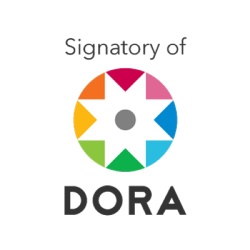Youth Identity at the Crossroad of Originality and Modernity
هوية الشباب بين الأصالة والحداثة
Abstract
There is a wide consensus in the academic debate that youth and social identities have always been associated with the controversy between originality and modernity. The latter erupted an identity crisis whose dimensions are evident in society in general and among youth in particular. Indeed, the issue of identity has been placed on the top of social agenda especially in light of challenges that are gradually removing the societal privacy barriers, denying the national entity, and destroying the foundations of sectarian and ethnic classification. Undoubtedly, technology has played a central role in the breach of identity as it systematically promotes a cultural dependency which contradicts our deep-rooted values and thus erases our authentic cultural existence. Since young people are the most responsive group to societal change, their central identity and their cultural dimensions of belonging are at stake. Henceforth, this research paper provides a sociological approach to the issue of identity; among young people, which fluctuates between commitment and disintegration, awareness and dispersion, and between originality and change in light of the social rift associated with dynamic and technological changes.
Downloads
References
- Arabic references in English:
Hanan, Awad Mukhtar. (2016). introduced by Nabil Al-Samalouti, Islamic Cultural Identity in Light of Contemporary Changes, Dar Al-Ma'arif University for Printing and Publishing, Alexandria, Egypt.
Samia, Al-Sa'ati. (2003). Arab Youth and Social Change, Dar Al-Masriah Al-Lubnaniah for Publishing, 1st edition, Cairo, Egypt.
Kelly, M. Hanoum. (2009). Social Identity, Self-Knowledge, and Leadership of Others, translated by Khalid bin Abdul Rahman Al-Awad, Al-Obikan Library for Publishing, Saudi Arabia.
Ma'moun, Tarbiah. (2012). Social Behavior of the Family, Contemporary Approach to Family Sociology Concepts, Dar Al-Nahda Al-Arabia, 1st edition, Beirut, Lebanon.
Mohammed, Al-Kawki. (2014). The Question of Identity in North Africa: Plurality and Fusion in the Reality of Man, Language, Culture, and History, East Africa for Printing, Morocco.
Haralambos, and Holborn. (2010). Sociology of Culture and Identity, translated by Hatem Hameed Mohsen, Kewan Publishing House for Printing, Publishing, and Distribution, Damascus.
Boukhalkhal, Ali. (2017-2018). Impact of Current Social, Cultural, and Economic Variables on Citizenship Values among Algerian Youth in the Age Group (15-39) years(Taʼthīr al-mutaghayyirāt al-ijtimāʻīyah wa-al-thaqāfīyah wa-al-iqtiṣādīyah al-rāhinah ʻalá Qayyim al-muwāṭanah ladá al-Shabāb al-Jazāʼirī fī al-fiʼah al-ʻUmarīyah (15-39) sanat), Unpublished Memoir submitted for the Doctorate in Sociology and Demographic Studies, University of Laghouat.
Hamdoush, Rashid. (2006-2007). Relational Strategies, Social Bonding and the Problem of Traditions and Modernity through Youth Perceptions, Unpublished Memoir submitted for the Doctorate in Cultural Sociology, Faculty of Humanities and Social Sciences, University of Algiers.
Hafeeza, Mahlab. (2016). Algerian Youth and Cultural Identity in the Era of Globalization - Between the Dialectic of Acceptance and Rejection, Sawra for Human and Social Studies, Issue 2.
Sultan, Belgaith. (2011). Manifestations of Identity Crisis among Youth, Journal of Humanities and Social Sciences, University of Ouargla, Volume 3, Issue 5, Algeria.
Hamdoush, Rashid. (2013). Construction of Identity among Algerian Youth or the Birth of Emerging Identities, Journal of Humanities and Social Sciences, Volume 5, Issue 11, Ouargla, Algeria.
Hamdoush, Rashid. (2013). The Concept of Youth and the Social Bonding Process: Elements for Discussion with an Attempt to Build a Model for Youth in Contemporary Algerian Society, Journal of Humanities and Social Sciences, Issue 05, Biskra, Algeria.
Abdul Aleem, Muhammad Ismail. (2022). www.aranthropos.com, Accessed: 28/12/2022, 15:06.
United Nations Organization. (2022). www.un.org, Accessed: 23/12/2022, 14:05.

This work is licensed under a Creative Commons Attribution-NonCommercial 4.0 International License.









